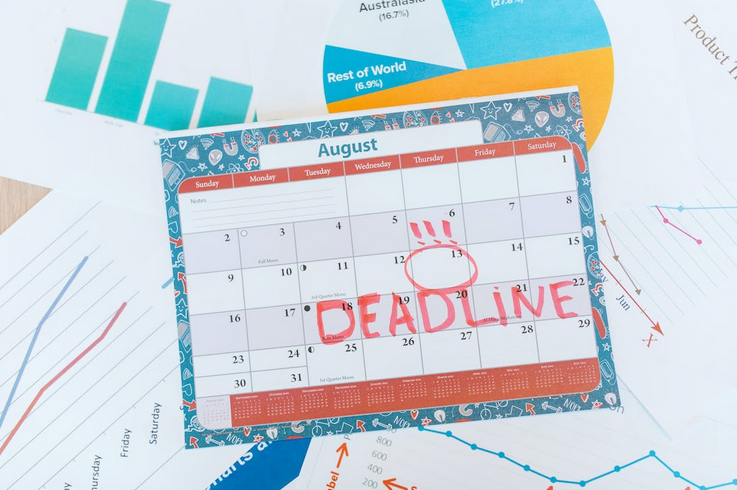“Oh, fill yourselves!”
You’re probably familiar with this situation: the quarter is drawing to a close and suddenly someone sets an appointment labelled “Quarterly Business Review” (or something similar). And you suddenly jump up and think: “There was something else”. You search for the right template from the last quarter (hoping that it hasn’t been changed in the meantime) and try to compile all the relevant data. It shouldn’t be that difficult.
A few hours later, you realise that “shouldn’t be that difficult” has turned into “how am I supposed to know what happened three months ago?”. You sit in front of the almost empty file, the headings in the template screaming at you: “Fill me up!”. But what about that one project again? Was it finished before the start of the quarter or not?
A few days, sometimes even weeks, go by before the document is halfway finished. In the meantime, you’re in the middle of the next quarter. As you are not the only ones who have taken longer, the discussion of the quarterly report takes place halfway through the next one. The figures are now cold coffee and you have lost at least six weeks in which you could have planned and implemented plans to improve your own department or organisation. And nobody really cares what you wrote anymore. It’s been too long.
But does it have to be that way? I had this thought a few quarters ago when I was sitting in front of an almost empty document and would have liked to say to the headings: “Why don’t you fill it yourselves?”
As I sat in front of the aforementioned file, I was annoyed that I hadn’t started filling the document three months ago. Maybe a little bit at a time. Yes, why not?
And then the idea was born how we could make our Quarterly Business Reviews easier – History Writing.
History Writing
The principle behind it is simple: you don’t start writing your review at the end, but at the beginning. So not at the end of the quarter (or period), but when it starts.
Sounds strange at first, doesn’t it? How are you supposed to know what you’re reporting at the beginning? How am I supposed to know what has worked and what hasn’t? How do I know the KPIs at the end of the quarter?
And in principle, the answer is “It’s quite simple”. Or at least “almost quite simple”. Because what you have, or at least should have, is your planning. You have an idea of what you want to achieve in the next three months, which KPIs need to be improved, which projects should be started or completed.
You already have everything you need to get started with the report. And you can now write down exactly what you want to achieve – just in the past tense.
Instead of: “In the third quarter we will complete Project Unicorn and thus achieve a sales increase of three percent“, you write “In the third quarter we completed Project Unicorn and achieved a sales increase of three percent.”
Now the justified objection may come that I don’t even know yet whether Project Unicon can be completed. In that case, writing this sentence would be a waste of time.
That may be the case. But I maintain that at least 80 per cent of what you write will happen in one way or another. The deviation from your planning will therefore not usually be very large, as we are only talking about a period of three months. And if you do end up having to rewrite everything, you have a clear indicator that something is wrong with your planning. And quite honestly, then you have a completely different problem.
And now just update
Once you have written the document, you can sit back and relax. When everyone else is frantically searching for the templates towards the end of the quarter and shouting at the empty files on their screens that they should fill themselves, you can take your document out of your pocket and relax with a cup of tea.
Well, it’s not quite that easy, but almost. What you have to do now is sit down every few weeks and make relevant changes to the document.
Is Project Unicorn not going as planned? Have employees unexpectedly been absent for a long time? Did additional tasks come from the management board? Were there unexpected changes in the company that affected your plans? Was the planning too optimistic after all?
Simply continue writing your document, updating the past and adapting it to the new circumstances. The time interval is up to you and also depends on the amount of time you report and the size of your organisation and other factors. You don’t need regular intervals either. That is entirely up to you. However, you should update the achievements regularly to avoid not knowing exactly what has happened at the end.
Why don’t you make a plan?
Speaking of plans. History writing also helps you to plan better. Because by wanting to write in advance what needs to be finished, you have to deal with it right from the start. This means that you already have an overview of the next three months instead of moving from sprint to sprint.
This not only helps you, but is also helpful for your employees and stakeholders who set the target for the quarter.
So you can use this method to align it with your planning or – and this is the trick – use it as your planning right away. This helps you to realistically scrutinise once again whether the planning is correct. By writing what you want to report now, you are forced to deal with the corresponding results before you start. For example, you avoid trying to track an important KPI that is expected at the end of the report.
Paint it … not Black
Actually, that’s all there is to it. The method is as simple as it is efficient. Depending on your taste, you still have to adapt it to your actual needs.
When we first started using it, we realised the following challenge. If you write the document over the quarter, how do you distinguish the future from the past?
We decided on a monthly check-in and updated the document with everything that had already happened, i.e. we compared our planned past with reality. But the question quickly arose: if you simply rewrite the text, you suddenly no longer know what has already happened and what is still planned – the text suddenly looked the same.
But you don’t want to change what has already happened. You no longer need to rewrite or review it.
To solve this, we simply coloured the text in the entire document blue. In other words, our first version at the beginning of the quarter, our baseline, consisted entirely of blue text.
When we then started to enter the actual events in the document one by one, we adapted the relevant passages and coloured them black. Just as they would appear in the final document.
So …
“We completed the Unicorn project in the third quarter. The release had no impact and all 2368 customers were migrated to the new platform. As a result, we achieved a three per cent increase in sales and a 2.3% increase in customer satisfaction. “
… became…
“We completed the Unicorn project in the third quarter. The release had no impact and all 2414 customers were migrated to the new platform. As a result, we achieved a three per cent increase in sales and a 2.3% increase in customer satisfaction.“
The part that you have already completed can be marked accordingly and adjusted if necessary (in the example, the number of customers to be migrated increases compared to your planning at the beginning of the quarter). The aspects that had not yet been achieved or were known (in the example, the two KPIs) were simply highlighted in colour until the last version of the document. In this way, our report continued to take shape until you only had to do one thing at the end of the quarter – send it out.
Finally
History writing is a simple method that saves you a lot of work by writing your reports at the beginning (and in between) rather than at the end. Sure, the idea is not that new and is loosely based on a press release or similar formats.
And yes, the time you have to put into writing a Quarterly Business Review will not be reduced. Whether written at the beginning or end of a quarter, it takes the same amount of time to create the content.
But what you will save yourself is a whole lot of stress. In addition, the quality of your documents usually increases, because instead of just a few days, you have a whole quarter to regularly check your document and find errors.
It also helps you to plan better, as you have to think intensively about what you want to achieve before you have even started. The method can of course be used not only for quarterly reviews, but also for other documents/processes. Try it out..


